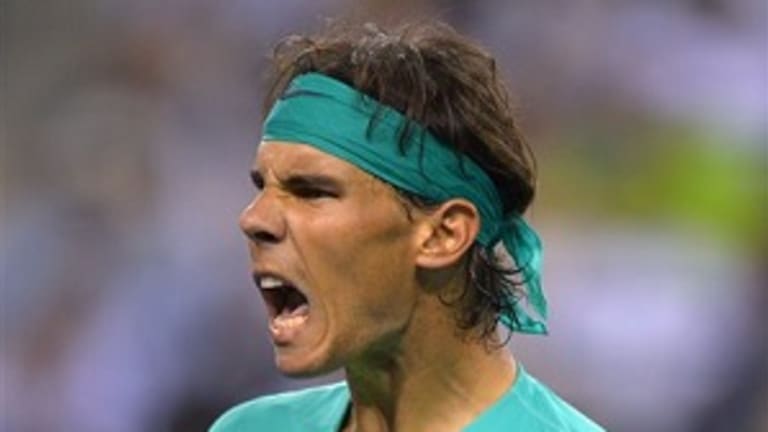I know some people who are already writing off Monte Carlo, admittedly a gem of an event, simply because Nadal has won there eight times (he’s 44-1 and has hauled away almost $5 million in prize money, which puts him right up there with the heiresses, tax cheats, and arms dealers who also like to hang their hats in the sunny principality). Besides, Federer would rather stay home, wrestling on the carpet with his girls, and top-seed and world no. 1 Novak Djokovic is questionable. What, David Ferrer is going to beat Nadal?
Djokovic’s case is particularly interesting. You know, you don’t get to go live in Monte Carlo without a few strings attached. Those folks tend to expect that you’ll play their tournament since they’re nice enough to let you live there. I don’t think Djokovic will risk his health just to satisfy his Monegasque patrons, but I certainly can see him more or less mailing in a second rounder because of a tender ankle and the long road leading to Paris disappearing on the horizon.
If the action in the week to come makes Monte Carlo look like an ATP 250 masquerading as a Masters event held in honor of Rafa, it will enhance the growing sense that the only real “tune-up” tournaments for the French Open are the back-to-back Masters events at Madrid and Rome. That’s because the rest of April after Monte Carlo is given over to three ATP 250s and a lone ATP 500 (Barcelona). That once familiar sense that the players are marching toward Roland Garros in lock-step is fading; these days, the emerging mandate when it comes to scheduling is “Every man for himself!”
This would seem to be a windfall for the two big ATP 1000s that take place in May (Madrid and Rome). But those tournaments need to look at the relationship of Indian Wells and Miami for a reality check. We’re now in an era when marquee players seem perfectly content to play a single warm-up event for any given major, and that’s a big change. Players don’t need that much time to adapt to clay (it’s kind of like riding a bike; the ability comes back), and their sense of what it takes to be adequately “match tough” for a major has been drastically boiled down to a pure concentrate.
That brings us to Andy Murray, who took a page from the Djokovic playbook for 2011 and has made the most dramatic (as least visibly) progress in transforming himself from a tennis player into an athlete who plays tennis. This is one of the least reported impacts that Ivan Lendl seems to have had on Murray.
It isn’t like Murray was negligent in his training before, nor even that Lendl is bringing new and more productive exercises to Murray’s training sessions (although he could be). It’s more that Lendl remains the best Open-era example of a guy who put his faith in fitness, and found it a transformative experience. He didn’t become a dominant champion until he developed his Iron Man sensibilities, and those he made up as he went along for it was not yet the age of the entourage and fitness specialist.

